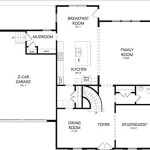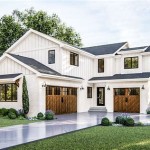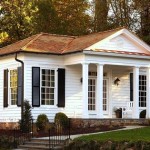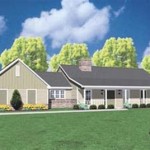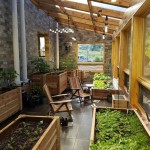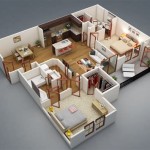Small Modern Home Plans: Design and Functionality
The increasing demand for sustainable and efficient living spaces has driven the popularity of small modern home plans. These designs prioritize functionality, aesthetics, and affordability, offering an alternative to larger, more conventional homes. Small modern homes often incorporate innovative space-saving solutions, energy-efficient technologies, and minimalist design principles to create comfortable and stylish living environments.
The focus on sustainability in modern architecture extends to these smaller designs. The reduced footprint minimizes environmental impact, and the incorporation of eco-friendly materials and energy-efficient systems further enhances their sustainability. Furthermore, these homes often utilize passive solar design, natural lighting, and rainwater harvesting techniques to reduce reliance on external resources.
Small modern home plans cater to a diverse range of individuals and families, including first-time homebuyers, downsizing retirees, and eco-conscious individuals seeking a minimalist lifestyle. The flexibility and affordability of these designs make them an attractive option for those seeking to own a home without incurring excessive debt or environmental impact. This article will explore crucial aspects of small modern home plans, providing insights into their design elements and practical considerations.
Optimizing Space in Small Modern Homes
The efficient utilization of space is paramount in small modern home design. Every square foot must be carefully considered and strategically planned to maximize functionality and minimize clutter. This often involves incorporating multi-functional furniture, open floor plans, and vertical storage solutions.
Open floor plans are a common feature in small modern homes. By eliminating unnecessary walls and partitions, these plans create a sense of spaciousness and allow natural light to permeate throughout the living areas. This design approach also facilitates better airflow and enhances social interaction within the home.
Multi-functional furniture is another crucial element in optimizing space. Items such as sofa beds, storage ottomans, and nesting tables can serve multiple purposes, reducing the need for separate pieces of furniture. These versatile items help to keep the home organized and clutter-free.
Vertical storage solutions are essential for maximizing space in small homes. Shelving units, wall-mounted cabinets, and loft spaces can be used to store belongings without taking up valuable floor space. Utilizing vertical space effectively can significantly increase the storage capacity of the home.
Pocket doors and sliding doors are space-saving alternatives to traditional swing doors. These doors slide into the wall or along the wall, eliminating the need for a door swing arc and maximizing usable floor space. They are particularly useful in small bathrooms, closets, and hallways.
Built-in storage is integrated directly into the architectural design of the home. This can include built-in bookshelves, window seats with storage underneath, and hidden compartments in furniture. Built-in storage is a seamless and efficient way to incorporate storage without compromising the aesthetics of the home.
Mezzanines can add extra living space in small homes with high ceilings. These elevated platforms can be used as bedrooms, offices, or reading nooks. Mezzanines are a creative way to maximize vertical space and create distinct zones within a small home.
The strategic use of mirrors can create the illusion of more space and light. Placing mirrors on walls or in hallways can reflect light and make the room feel larger and brighter. Mirrors are a simple and effective way to enhance the sense of spaciousness in a small home.
Key Design Elements of Small Modern Homes
Small modern home plans are characterized by specific design elements that contribute to their aesthetic appeal and functionality. These include clean lines, minimalist details, natural materials, and ample natural light.
Clean lines are a hallmark of modern architecture. These lines are characterized by their simplicity and lack of ornamentation. They create a sense of order and elegance, contributing to the minimalist aesthetic of small modern homes.
Minimalist details are essential in small modern home design. This involves reducing clutter and unnecessary ornamentation, focusing on essential elements and clean surfaces. Minimalist design promotes a sense of calm and serenity, which is particularly beneficial in small living spaces.
The use of natural materials, such as wood, stone, and glass, is a common feature in small modern homes. These materials add warmth, texture, and visual interest to the interior and exterior of the home. They also connect the home to its natural surroundings.
Large windows and skylights are incorporated to maximize natural light. Natural light enhances the sense of spaciousness and creates a more inviting and uplifting atmosphere. It also reduces the need for artificial lighting, contributing to energy efficiency.
Open-concept layouts encourage natural light to permeate throughout the home, enhancing the visual appeal of the space. Proper orientation of windows, and the choice of materials, can significantly enhance natural lighting.
Neutral color palettes are often used in small modern homes to create a sense of spaciousness and light. White, gray, and beige are common choices for walls, floors, and furniture. These neutral colors provide a blank canvas for adding pops of color through accessories and artwork.
Geometric shapes and patterns are sometimes used to add visual interest to small modern homes. These can be incorporated through architectural details, furniture design, or decorative elements. Geometric designs add a touch of modernity and sophistication to the space.
Creative lighting design is critical in a modern home. Strategic placement of lighting fixtures can help define spaces, and create different atmospheres. A mixture of ambient, task, and accent lighting can be used to customize the mood throughout the home.
Energy Efficiency and Sustainability
Energy efficiency and sustainability are integral components of small modern home plans. These homes are designed to minimize energy consumption and environmental impact through the use of sustainable materials, energy-efficient appliances, and renewable energy systems.
Sustainable building materials, such as reclaimed wood, bamboo flooring, and recycled content insulation, are used to reduce the environmental impact of construction. These materials are durable, environmentally friendly, and often aesthetically pleasing.
Energy-efficient appliances, such as Energy Star-certified refrigerators, washing machines, and dishwashers, are selected to minimize energy consumption. These appliances use less energy than standard models, reducing utility bills and environmental impact.
Renewable energy systems, such as solar panels and wind turbines, can be integrated into small modern homes to generate electricity and reduce reliance on fossil fuels. These systems can significantly reduce the carbon footprint of the home and provide long-term cost savings.
Passive solar design principles are incorporated to optimize natural heating and cooling. This involves orienting the home to maximize solar gain in the winter and minimize it in the summer. Proper insulation, shading, and ventilation are also key components of passive solar design.
Water-saving fixtures, such as low-flow toilets, showerheads, and faucets, can reduce water consumption. These fixtures use less water than standard models, conserving water resources and reducing water bills.
Rainwater harvesting systems can be used to collect rainwater for irrigation and other non-potable uses. This reduces reliance on municipal water supplies and conserves water resources.
Smart home technology can be integrated to monitor and control energy consumption. Smart thermostats, lighting systems, and appliances can be programmed to automatically adjust energy usage based on occupancy and environmental conditions.
Proper insulation is essential for maintaining energy efficiency. Adequate insulation in walls, roofs, and floors helps to prevent heat loss in the winter and heat gain in the summer, reducing the need for heating and cooling.
Green roofs, with a layer of vegetation on the roof, can provide insulation, reduce stormwater runoff, and improve air quality. They can also enhance the aesthetic appeal of the home and create a more sustainable environment.

Contemporary Nyhus 491 Robinson Plans House Exterior Small

Small Home Plan With 3 Bedrooms House Floor Plans Bungalow Exteriors

Modern Style On A Budget 10 Tiny Cool House Plans Houseplans Blog Com

Best Ing Small House Plans Mark Stewart Modern Home Design

Small Modern House Plan With S

Small Modern House Plans Home Floor Designs The Designers

Pin On One Bedroom House Plans

Tiny Modern House Plans Small And Floor

Folkstone 5178 1 Bedroom And 5 Baths The House Designers

Modern 900 Sq Ft House Plans Houseplans Blog Com
See Also

